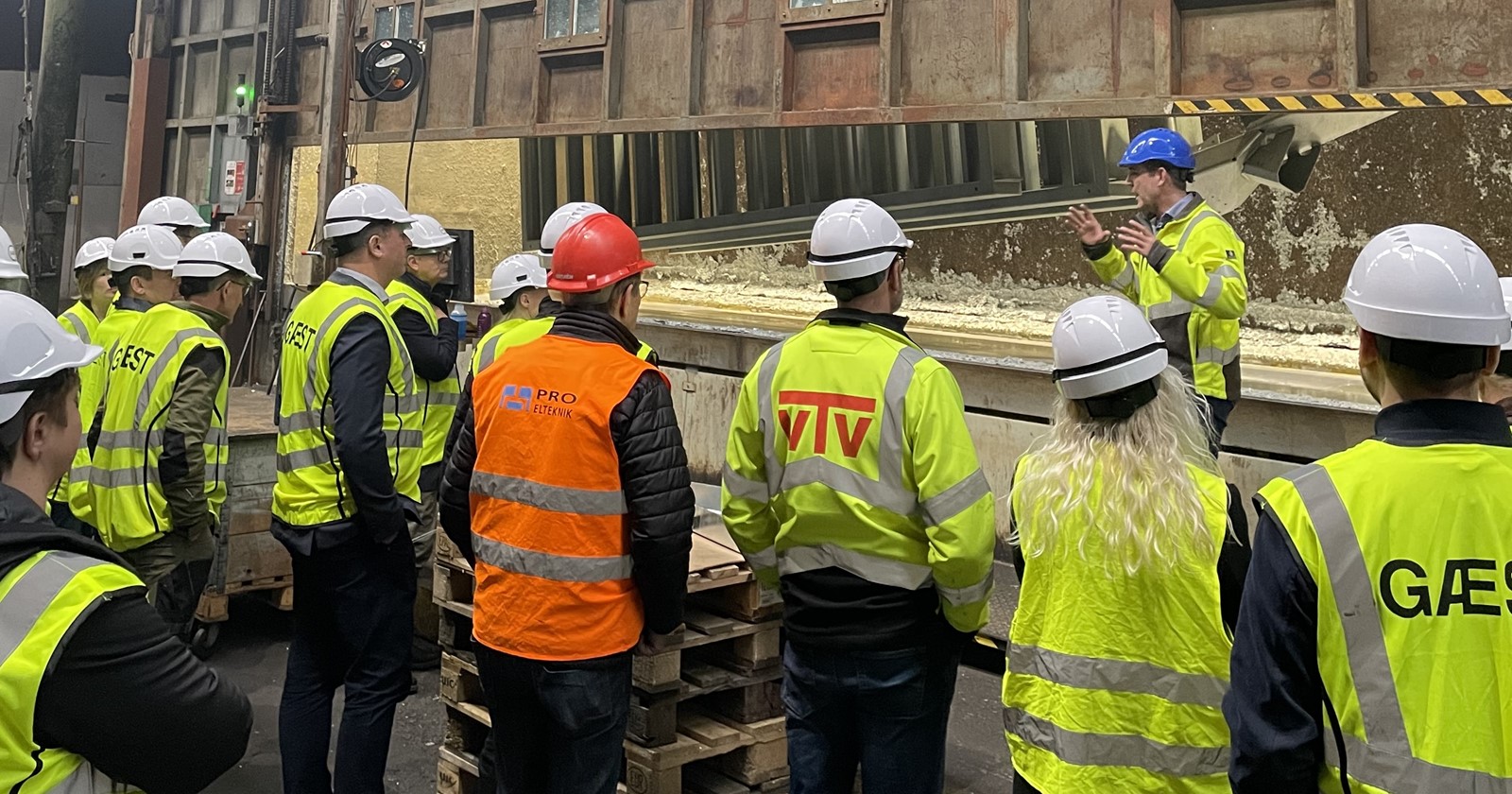When management and employees realized their own mental barriers, good ideas flowed, solving a major issue. Today, DOT saves a significant amount of energy.
DOT, a full-service surface treatment supplier based in Vildbjerg, has a zinc bath that is heated to 450°C around the clock. This is roughly equivalent to the annual electricity consumption of two households—every day, year-round. Therefore, it makes sense to focus on green transformation, both from an economic and sustainability perspective.
Project Led to the FlexPlatform
In 2020, DOT became part of the DI project "Klimaklar SMV," aimed at strengthening growth and competitiveness through CO2 calculation, climate strategy, and branding. This project led DOT to become part of the FlexPlatform, where businesses reduce their electricity consumption during periods when others are using more power. For example, during dinner time, when household electricity use is high, wind and solar energy can’t cover the demand. Instead of starting a plant using fossil fuels, energy companies can draw from the power that companies like DOT avoid using.
Energy Disappeared into Thin Air
However, when you rely on keeping a bath at 450°C 24/7, you’re not ready to turn off your power consumption. "When we were first asked if we could turn off the bath, we immediately said NO! It was absolutely impossible," says Jimmy Storbank from DOT.
In the project, DOT was given data on energy loss during idle time. It was possible to cover the zinc bath with a lid when not in use, but the lid was heavy, and it took 15 minutes each time to put it on and take it off. Employees wouldn’t bother if they were only on a short break, as it would waste time. So, the bath often wasted large amounts of energy heating the production hall’s air for no reason.
“The bath was a huge energy hog with its constant heat loss. Suddenly, it became interesting to decode whether we could reduce energy loss when it wasn’t in use,” says Jimmy, who had three different energy consultants visit the factory. They all came to the same conclusion as DOT had originally: "No, no significant improvements could be made."
Employees Created the Solution
But the high CO2 numbers stuck in Jimmy Storbank’s mind. Could nothing really be done? He decided to involve the employees in finding a solution.
"We stood by the bath and had an in-depth conversation about why it was important to reduce energy consumption. What could we do? Suddenly, everyone saw the problem. We stopped focusing on the obstacles and decided to find a solution."
And they did. An hour later, the team realized that it wasn’t a practical problem to place the lid faster on the bath. Instead, it was a mental barrier.
"This is trivial but interesting. The huge lid had been stored in a corner for 15-20 years, and had to be fetched with a forklift. It couldn’t be placed where it is now because the zinc needed to go into the bath. Placement and workflows were fixed, but suddenly a chain reaction started: What if we move the zinc so the lid can be placed closer? We could move a container and install a crane to replace the forklift. Ideas started pouring in—and suddenly the solution was there."
Today, standing in the production hall and seeing the bath, lid, and zinc, it seems logical that they are placed where they are. But remember, these are huge units, and three energy consultants had independently concluded that no changes could be made.
Jimmy Storbank sees this as a great example of why employees should be involved in solutions: "External consultants can inspire and provide new knowledge. But no one from outside can know your process better than you do."
Separate the Economics and Understand Your System
Now it takes only six minutes to move the heavy lid on and off (three minutes each). Employees can place the lid when they go on break, or when the bath isn’t in use for other reasons. This has resulted in significant savings on energy costs, but also required new investments.
"You can’t separate green transformation from economics, and you can’t make an energy change without spending money. So, you have to look at the bigger picture and also adjust smaller things," says Jimmy Storbank, who adds that if he had to start the energy optimization process over, he would begin by looking at his accounts and going through all the items.
"Separate the economics. Because then, numbers will emerge that you want to understand better. What can I do? Why is the energy consumption so high here? Should I accept it because there’s nothing to be done, or can I improve it? Maybe you can’t work with it, fine, then move on to the next number. Slowly, things begin to take shape. You start to understand your system, so you can change it."
Inspiration from DOT
In addition to the zinc bath lid, DOT has found other places to save energy, both big and small:
-
Electric trucks everywhere: Diesel-powered trucks are not allowed inside, so the benefit is both in energy consumption and working environment.
-
Forklifts are no longer needed for the zinc lid.
-
A heat exchanger ensures that heat is reused rather than being lost through the chimney. The goal is to connect a heat pump to replace the gas heater, making natural gas use at DOT a thing of the past by the new year.
-
In progress: Further optimization of the lid solution to reduce the current six-minute process even more.
-
In the long term: Improvement of transport. DOT has tested an electric truck, but it doesn’t work due to the company’s heavy goods. It will have to wait until electric trucks become viable for heavy goods.
Through innovation and employee involvement, DOT has not only reduced its energy consumption but has also set the stage for a more sustainable future.
Artiklen er skrevet af Birgitte Iversen, RETNING
